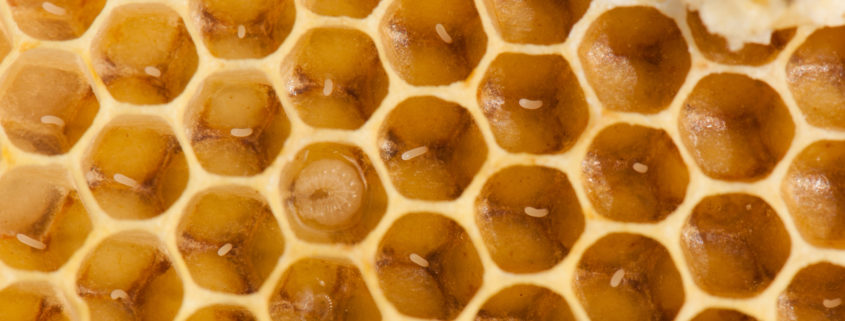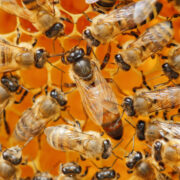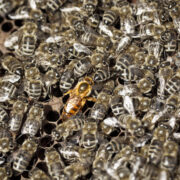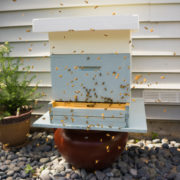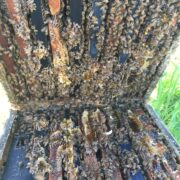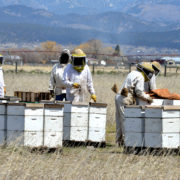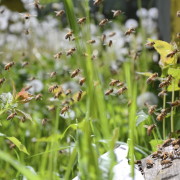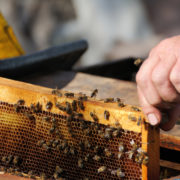Fertilized vs. Unfertilized Eggs – A Queen Bee’s Gender Reveal Party
Some of us enjoy celebrating “gender reveal parties” – because the truth is, no one really knows whether a human infant will be male or female until birth (or close to birth in the case of an ultrasound.) Before this technology, however, it was anyone’s guess whether a child would be born as a boy or a girl. During the early stages of pregnancy, the odds of a child developing as one or the other are random, and more or less equal to a coin toss.
Imagine, however, if we humans could determine the sex of our offspring – not when the child was born, nor earlier with an ultrasound scan, but rather at the time of conception! How different and crazy would our world be if there were such a scenario?
Believe it or not, this is the way honeybees determine the sex of their offspring. It’s actually the queen who dictates the sex of her offspring – literally at the time of egg-laying. When a queen lays an egg, she has her own method of laying either a fertilized or unfertilized egg. As the egg passes through her oviduct, the queen can choose to fertilize the egg by releasing a tiny amount of her stored sperm from her spermatheca. This will fertilize the egg. Conversely, the queen can also choose to not fertilize the egg.
A fertilized egg will become a female honeybee – either a worker bee or a queen bee. An unfertilized egg will develop into a male honeybee – destined to be a drone. In a healthy colony with a healthy queen, most eggs are fertilized. This makes sense since the vast majority of honeybee colonies consist of worker bees, which are always female.
It is astonishing that a single insect, the queen, has this powerful ability to dictate the sex of her offspring right at the time of conception. It is equally astonishing that somehow, she can determine the right quantity of drones and the right seasonality for laying drones at any given time. All of this is within her power, and somehow, she knows exactly what to do.
How much of this decision-making lies within the queen herself versus within the colony is not entirely clear. Is the colony acting in the same way that a baseball catcher acts with a pitcher, calling the type of pitch to throw? Or is the pitcher herself calling the shots in this case? Scientists believe that both are happening, although the queen clearly dictates the final decision.
The colony itself has some influence in determining the number of drones by the way they choose to allocate the honeycomb when building. If the worker bees construct a large amount of drone-sized comb and point the queen towards it then the queen will lay more unfertilized eggs (drones). If the colony does not build any drone-sized honeycomb, then the queen will only lay worker brood. With no appropriately sized comb, what choice does the queen have after all? It is also possible for worker bees to use pheromone signals to help influence the overall frequency of drone laying.

